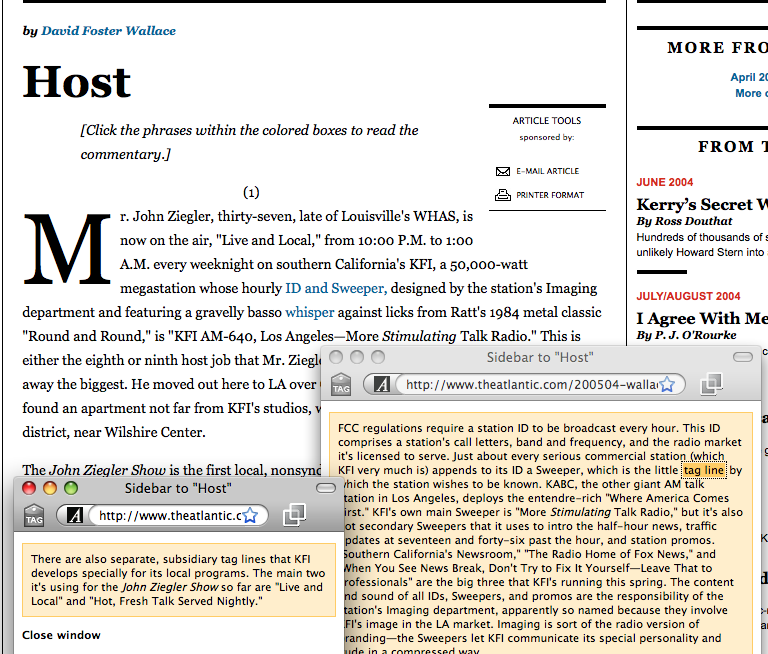Though commonplace now, the idea of using hyperlinks in the digitized versions of newspaper and magazine articles was a radical idea when it was first implemented. They created a level of trustworthiness between the writer and reader which did not exist before; allowing the reader to check the validity of the author’s sources more immediately than they previously could. Most journalist’s articles are not required to cite their sources, so hyperlinks allowed the reader to confront the article and the research which led to the final composition efficiently.
The difficulty with hyperlinks being used this way is also the most interesting thing about them. Just like any digital text which does not use hyperlinks, they expand the page from the limitations of its dimensions to something which is unlimited. The reader is meant to experience the page through the contents contained with them, but now that space includes the many different webpages which use the article as a springboard to direct the reader towards them.
Challenging the notion even further is when hyperlinks are used as a digital replacement for when footnotes were used in the printed form. So such usage is the only kind where hyperlinks are used to represent what already exists in the print form of the article in question, and can even be represented in the same space on the page.
When David Foster Wallace’s now notorious article “Host” was first published in The Atlantic in 2005, the writer’s numerous footnotes – and footnotes within footnotes – were printed in different coloured texts so as not to confuse the reader but also as a creative solution for presenting the entirety of Wallace’s essay while maintaining the experience that he had intended for his reader. The links are still coloured in the same way which the footnotes were in the original print to retain the authenticity of the original artefact in its digital form.
But because the links, in this case, are footnotes and not quick ways for the author to validate their claims, the new window that the link opens containing the footnotes is still visible on the page which contains the footnotes. In a way, using the hyperlinks in this fashion much more closely resembles the footnotes in the original article. The reader still experiences their content the way they would in the print form without ever having to alter their page placement – but very few online texts actively point out the page breaks because the infinite nature digital space may make the practice redundant for many readers.
In digital articles, hyperlinks have become another banality of the page alongside the page number and the footer. Still, they have dramatically altered the way the page of a newspaper or magazine had been defined for decades.

Hi Jackson, I agree, this is an elegant and reader-friendly way of including references. Best, Laura
ReplyDelete